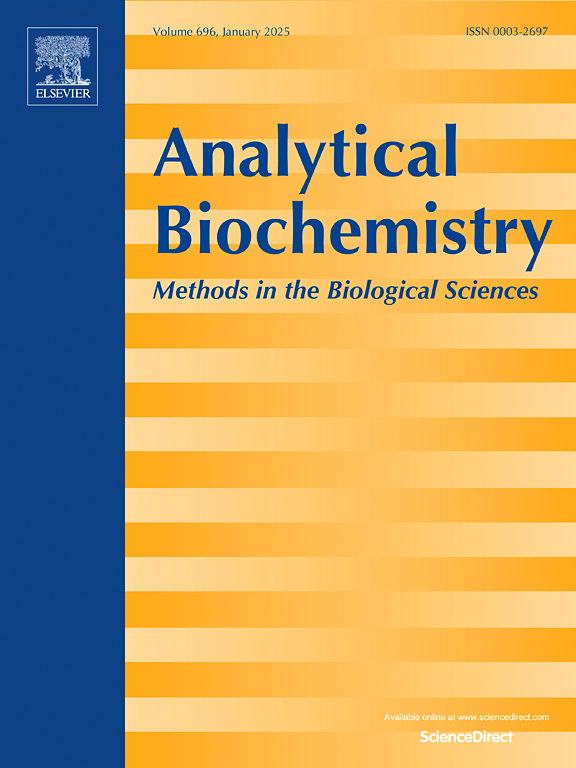用有效的荧光光谱法探讨血清镁水平与自闭症谱系障碍的关系。
IF 2.6
4区 生物学
Q2 BIOCHEMICAL RESEARCH METHODS
引用次数: 0
摘要
镁是生物系统中必不可少的矿物质,对大脑健康有重要影响。它的缺乏被发现与不规则的代谢过程和神经发育障碍有关。本研究的目的是建立和验证一种基于标准添加方法的分析方法,用于测定自闭症儿童和健康儿童血清中的内源性镁水平。分析上,该方法涉及用镁-磷钼酸离子对配合物功能化荧光石墨烯量子点,然后测量镁诱导的荧光猝灭在功能化石墨烯量子点上,这是浓度依赖性的。该方法按照ICH M10对生物分析技术验证的要求进行了验证,并可靠地定量了自闭症和健康儿童血清中的镁浓度。研究发现,自闭症儿童血清镁浓度明显低于健康儿童(P < 0.01),提示缺镁与自闭症谱系障碍之间存在相关性。自闭症组和健康组的平均血清镁水平(mg/dl)分别为2.03±0.33和2.28±0.26。本文章由计算机程序翻译,如有差异,请以英文原文为准。

Exploring the association between serum magnesium level and autism spectrum disorder using validated spectrofluorimetric method
Magnesium is an essential mineral in biological systems and has a significant impact on brain health. Its deficiency has been found to correlate with irregular metabolic processes and neurodevelopmental disorders. The objective of this research was to establish and validate an analytical approach based on the standard addition methodology for determining endogenous magnesium levels in the serum of autistic and healthy children. Analytically, the approach involved functionalizing fluorescent graphene quantum dots with a magnesium-phosphomolybdic acid ion pair complex, followed by measuring magnesium-induced fluorescence quenching on the functionalized graphene quantum dots, which is concentration-dependent. The approach was validated in accordance with the ICH M10 requirements for bioanalytical technique validation, and it reliably quantified magnesium concentrations in the serum of both autistic and healthy children. The study found that autistic children have considerably lower serum magnesium concentrations than healthy children (P < 0.01), indicating a correlation between magnesium deficiency and autism spectrum disorder. The average serum magnesium levels (mg/dl) recorded for the autistic and healthy groups were 2.03 ± 0.33 and 2.28 ± 0.26, respectively.
求助全文
通过发布文献求助,成功后即可免费获取论文全文。
去求助
来源期刊

Analytical biochemistry
生物-分析化学
CiteScore
5.70
自引率
0.00%
发文量
283
审稿时长
44 days
期刊介绍:
The journal''s title Analytical Biochemistry: Methods in the Biological Sciences declares its broad scope: methods for the basic biological sciences that include biochemistry, molecular genetics, cell biology, proteomics, immunology, bioinformatics and wherever the frontiers of research take the field.
The emphasis is on methods from the strictly analytical to the more preparative that would include novel approaches to protein purification as well as improvements in cell and organ culture. The actual techniques are equally inclusive ranging from aptamers to zymology.
The journal has been particularly active in:
-Analytical techniques for biological molecules-
Aptamer selection and utilization-
Biosensors-
Chromatography-
Cloning, sequencing and mutagenesis-
Electrochemical methods-
Electrophoresis-
Enzyme characterization methods-
Immunological approaches-
Mass spectrometry of proteins and nucleic acids-
Metabolomics-
Nano level techniques-
Optical spectroscopy in all its forms.
The journal is reluctant to include most drug and strictly clinical studies as there are more suitable publication platforms for these types of papers.
 求助内容:
求助内容: 应助结果提醒方式:
应助结果提醒方式:


